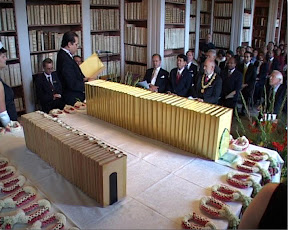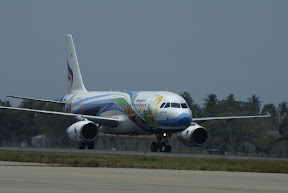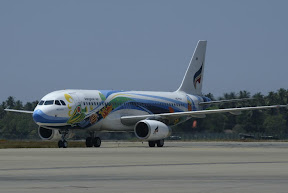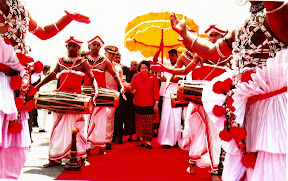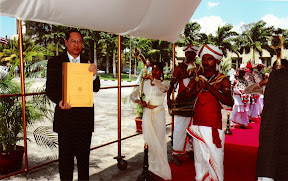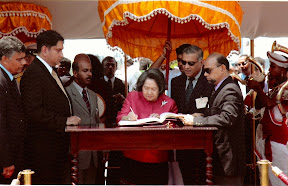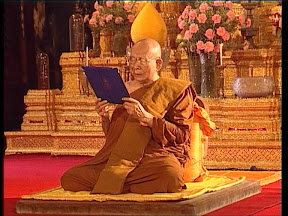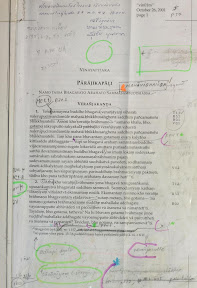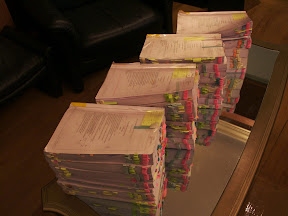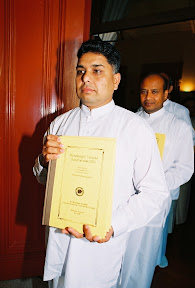A Tipiṭaka Pilgrimage Log
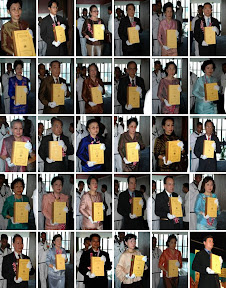
In the afternoon of Sunday March 6, B.E. 2548 (2005) at the Bandaranaike Memorial International Conference Hall in Colombo, Sri Lanka, a new chapter in history of the Buddhasāsana was created when the inaugural set of the world's first complete Pāḷi Tipiṭaka edition in Roman script was brought from Thailand to the hall. Amidst traditional drumming and dancing escorted by children and navy personnels, the 40-volume Tipitaka was reverently placed on the center table of the stage, in front of the altar to the white Buddha statue, by 80 pious members of the Dhamma Society of Thailand, headed by Major Suradhaj Bunnag, the Chancellor of the M.L. Maniratana Bunnag Dhamma Society Fund under the Patronage of His Holiness Somdet Phra Ñāṇasaṃvara, the Supreme Patriarch of Thailand. To witness this historic state ceremony organized by the Ministry of Foreign Affairs and the Dhamma Society of Sri Lanka, a large gathering of over 1,000 distinguished people, headed by the Most Venerable Tibbatuwawe Sri Siddhartha Sumangala, the Supreme Patriarch of Sri Lanka's Syāmopāli Mahānikāya, were present
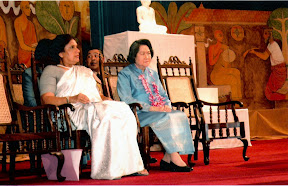
Both Her Royal Highness Princess Galyani Vadhana Krom Luang Naradhiwas Rajanagarindra, elder sister of His Majesty the King of Thailand, and Her Excellency Chandrika Bandaranaike Kumaratunga, the President of the Democratic Socialist Republic of Sri Lanka, appeared on the stage at around 4:00 pm. With the observance of the Five Precepts, the lighting of the traditional oil lamp, and the offering of flowers to the Buddha, the ceremony began. After the addresses by the Most Venerable Supreme Patriarch of Sri Lanka, and Princess Galyani Vadhana of Thailand , the ceremony reached its highpoint when Her Royal Highness the Princess of Thailand presented Volume No. 29 of the sacred Pāḷi Tipiṭaka to Her Excellency the President of Sri Lanka. After the address of Her Excellency Chandrika Bandaranaike Kumaratunga of Sri Lanka and presentation of a traditional symbolic gift to Her Royal Highness by the President, the National anthems of both countries were sung to mark the conclusion of the ceremony as well as the beginning of a new era of strong relationship and cooperation between the two states.

While sitting in the audience, I really apreciated the proceedings of the ceremony because I understood well that:
- This Roman-script edition is a gift of Dhamma from the people of Thailand to the people of Sri Lanka and subsequently to the world.
- This edition contains the Buddha's original message as preserved by the Theravāda Buddhist Tradition in a language belonging to Middle Indo-Aryan, known originally as Māgadhī (the language of Magadha) and now as Pāḷi (the language of the Sacred Buddhist "Text") .
- The name of the present edition is "Mahāsaṅgīti Tipiṭaka Buddhavasse 2500" because this edition is the end product of the Buddhist Era 2500 Great International Council held at Pāsāṇa Cave, Yangon, Myanmar, during the years 1954 to 1957, with the participation of 2,500 erudite Theravāda Buddhist monks representing all forms of local traditions of Theravāda Buddhist countries of the world, such as Sri Lanka, Myanmar, Thailand, Laos, and Cambodia.
- This is the world's first complete Pāḷi Tipiṭaka set in Roman alphabet or Romanised script. Unlike others, it has 40 volumes in complete form as they have been handed down by the last Great International Council within Theravāda tradition, in B.E. 2500 (1957).
- The editorial works of this present Romanised Pāḷi Tipiṭaka took place during a 5 year period, from B.E. 2542 to 2548 (1999 to 2005). During this period, His Holiness Somdet Phra Ñāṇasaṃvara the Supreme Patriarch of Thailand, who has written the benediction to the new Roman-script edition, has extended his fullest support and approval by giving blessings and guidance to the project. Published in honour of His Majesty Bhumibol Adulyadej, the Buddhist Sovereign Monarch of Thailand, this edition also carries patronage from members of the royal family and the presentation also marks the 112th year of the printing of the world's first Pāḷi Tipiṭaka edition in B.E. 2436 or 1893 A.D. in Siam-script edition by King Chulachomklao the Great of Siam.
The Dhamma Society Thailand in the process of this new edition has reintroduced the Tipiṭaka culture in Thailand and in other Theravāda countries that once prospered under royal patronage of old. This time, the Dhamma Society has been supported by the patrons not only from the Matriarch of the Royal Family of Thailand, the Saṅgharājā and monastic community but also from both leaders of academic and business communities in Thailand.
In the editing process, the Dhamma Society has utilized an integrated multi-disciplinary approach : a collective work of pious experts from various disciplines. Among many important processes, the Tipiṭaka and Pāḷi experts have recited the entire 40-volume set thrice to verify the readings. The experts in computer engineering have used new and advanced technology, titled "Dhamma Technology", to ensure the accuracy of the text. In the process, the computer experts assisted in discovering over 40,000 significant anormalies and primary printing mistakes of the original manuscripts utilized for the purpose. In the editing process of the 40 volumes, containing 2,708,706 Pāḷi words in 20,606,104 Roman letters, 80,000 hours have been utilized in the proof-reading and an additional 10,000 hours to prepare the electronic Pāḷi Tipiṭaka version between 2002-2005.
The Dhamma Society is forthright and sincere in all its dealings and this is evident from its Project Archives. It has recorded all key events in the process of editing the Tipiṭaka in over 500 hours of video recording, creating a digital video documentary archive of over 6,500 gigabytes. In addition, the Project Achieves also contains 7 drafts of the 40-volume set, all together totaling 280 volumes, or about 140,000 pages or 220 megabytes of an electronic Pāḷi Tipiṭaka. All these demonstrate the visible energy and time that the experts put into this mammoth project.
- The Dhamma Society publication is not just another edition added to the Pāḷi Tipiṭaka collection. This publication is the resolution of the one and the only Great International Council convened between 1954-1957. Moreover it is a newly edited version free from previous printing mistakes with the original manuscript which has never been printed before. In comparison to the local editions of Myanmar, Sri Lanka and Thailand, this international edition transcends local boundaries and biases. Unlike the edition of the Pali Text Society (England), this Roman-script edition contains no speculative and imaginative reading of words by individual scholars into the holy scripture of the Tipiṭaka. Unlike the PTS edition in which some texts were formed based on a single manuscript or two, all volumes in this Pāḷi Tipiṭaka in Roman script contain the agreed readings at the Great International Council by 2500 pious and erudite Buddhist monks from the Theravāda Tradition.
- The Dhamma Society expects to present 1,000 sets of this Pāḷi Tipiṭaka edition to some leading institutions around the globe, with the priority given to those where 260 sets of the world's first printed Siam edition of 1893 A.D. are well preserved. It expects to present the special set of the Pāḷi Tipiṭaka in Roman script, the first in the Western world, to the Uppsala University of Sweden, one of the leading institutions in Europe, as a Royal Gift of Humanity from Thailand to the people of Europe and to the world.
My colleagues and I who attended this State Ceremony of the auspicious presentation of the Greatest Dhamma Gift to the people of Sri Lanka by the people of Thailand, left the event full of memories, joy and heart-felt thankfulness, most of all to Her Royal Highness Princess Galyani Vadhana, Honorary President of the Tipiṭaka Presentation to Leading Institution Worldwide. My special thanks also to the members of the Dhamma Society of Thailand as well as to Mr. Senaratne, the Tipiṭaka Patron and the Chancellor of the Dhamma Society of Sri Lanka, for inviting my colleagues and myself to take part in the World Tipiṭaka project and in the Royal Pilgrimage for the Tipiṭaka Presentation Ceremony.
May this great meritorious act of spreading the wisdom-based message of the Buddha become a causal connection in turning the world in the direction of peace!
G.A. Somaratne, Ph.D.
Head / Department of Pāḷi and Buddhist Studies
University of Peradeniya, Peradeniya, Sri Lanka
March 22, B.E. 2548 (2005)


